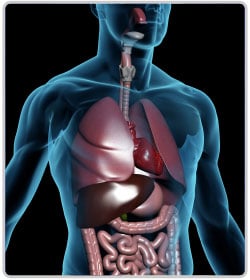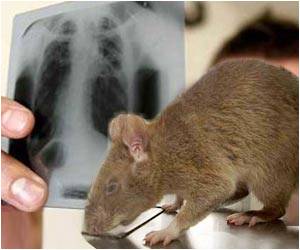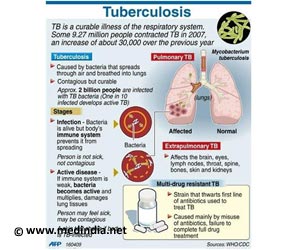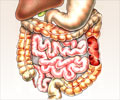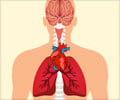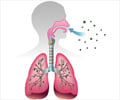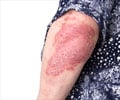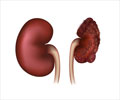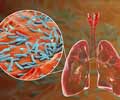How does Tuberculosis Spread?
Tuberculosis infection generally involves the lung tissue and is called pulmonary tuberculosis.
Pulmonary TB can be of two types based on whether the patient produces the TB germs in his sputum or not-
- Patients who have TB germs in the sputum are called sputum positive pulmonary TB patients.
- Patients whose sputum is negative are called the sputum negative pulmonary TB patients.

Generally the sputum positive TB patients are the people who spread the disease in the community. A single infected untreated person can spread the disease to 10-15 individuals in his community.
Tuberculosis is transmitted from an infected person to a susceptible individual through airborne particles known as droplet nuclei. Tuberculosis bacteria are not transmitted by surface contact. This means touching cannot spread tuberculosis unless the bacteria are breathed in.
The infectious droplet nuclei, 1–5 microns in diameter, are tiny water droplets with the bacteria that are released when people with active pulmonary or laryngeal tuberculosis cough, sneeze, laugh, shout, speak etc. The droplet nuclei remain suspended in the air for up to several hours.
Infection with tuberculosis germs does not denote disease. The initial infection might not be associated with any symptoms. The germs are harbored in the body and they lie in the dormant state. 10% of the people who harbor the infection develop the disease in a time span of 60 years.
The chances of developing tuberculosis disease in such an infected person becomes higher when the person’s immunity goes down in conditions such as diabetes, cancer, chronic illness, malnutrition, HIV or treatment with immunosuppressive drugs as in after transplant surgery.
People who are at an increased risk of tuberculosis -
- Infants
- Elderly people
- People with weak immune systems due to AIDS, chemotherapy, diabetes or immunosuppressant medicines.



